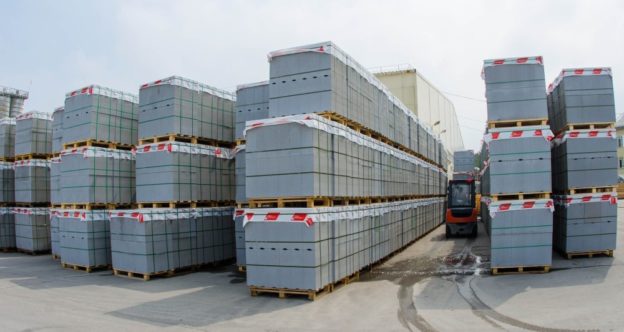There are endless uses of concrete- from the biggest of dams to the smallest of back yards or concrete block walls. Some common forms are:
READY MIXED
For large projects, concrete is delivered to the construction site already mixed. Materials are prepared and batched and mixed at the concrete plant and transported by truck-mixers. The concrete may also be mixed in the truck itself.

- View our corporate members list for readymixed concrete suppliers in Ireland
PRECAST
Concrete can be delivered to site as precast units that have been made in a factory. This facilitates greater quality control in producing the end product, and a more consistent material. Precast units can range from beams and slabs to entire housing units.

- View our corporate members list for precast manufacturers in Ireland
CONCRETE MASONRY
Many millions of concrete blocks are produced in Ireland every year for use in the construction industry. Also, though not strictly concrete, mortars and renders made from sand, cement and water are used to bond blocks or provide protection to block walls.

COLOURED CONCRETE
Concrete does not have to be grey. Colour can be introduced in several ways- by adding a pigment to the mix, by shaking pigment into the fresh concrete surface, using white cement or painting the surface.
SMALL CONCRETE JOBS
There are many jobs around the house and garden for which concrete can be used in small quantities and hand mixed on site.
- Find out more on the use of concrete around the house and farm
CONCRETE INNOVATIONS
Over the years, technologies have improved greatly. Other new developments include self-compacting concrete- eliminating the need for costly and time-consuming compaction, lightweight concrete- made with special lightweight aggregate and even the use of bamboo as reinforcement in developing countries. The future of concrete focuses on sustainability, the reuse of materials alongside very high strengths.
Some powders have been found to have cementitious properties when added with cement. These include ggbs-ground-granulated blast furnace slag and pfa-pulverised fuel ash- by-products of the iron and coal industries respectively. They have been found to enhance concrete properties by reducing the temperature rise of the concrete and can lower permeability, hence increasing durability.”

Believe it or not, the concrete spring shown here has a strength of over 200 N/mm2. David Bennett, a consultant on architectural concrete, predicts concrete will overtake plastics and ceramics, with applications such as thin staircases and even telephones.
Read David Bennett’s article here on High Performance Concrete

